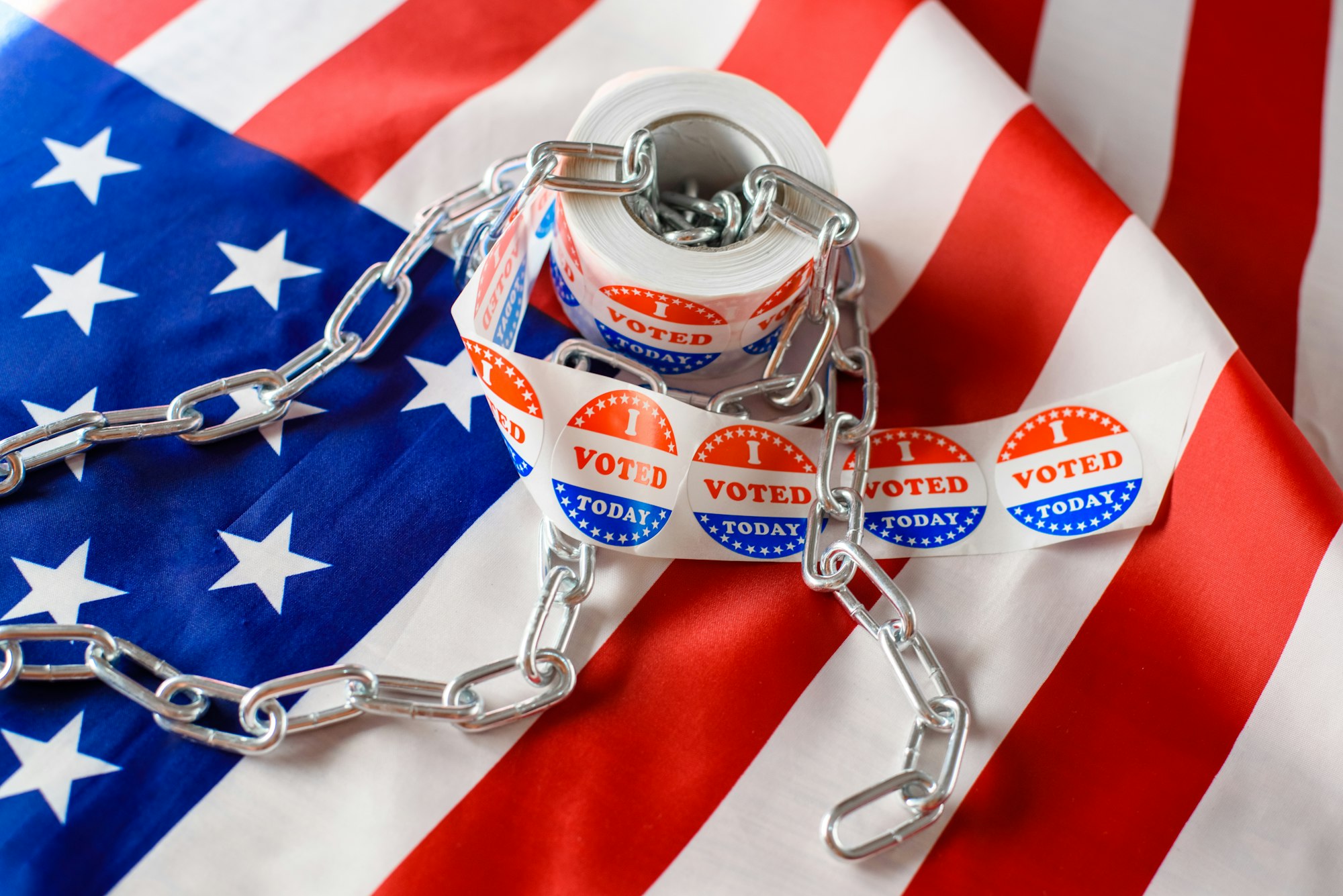Artificial intelligence (AI) is rapidly advancing, and one of its most concerning applications is the creation of deepfakes—extremely realistic yet fake videos and audio. While this technology has impressive uses in entertainment and education, it’s also becoming a dangerous tool that could disrupt democracy. As we approach major elections in the U.S., the growing sophistication of AI-generated deepfakes is raising alarms among experts and everyday people. The big worry? These fakes could mess with election integrity and manipulate voters.

What Are Deepfakes?
Deepfakes are media—videos, audio, or images—created or manipulated using AI to make someone appear to say or do something they didn’t. Using machine learning, deepfakes can alter people’s faces, voices, or even generate entire fake scenarios that look real. For example, a politician might be shown making a shocking statement that they never actually made. The fake looks so real that it can be difficult to tell it apart from the truth.
Why Deepfakes Are a New Threat to U.S. Elections
Deepfakes aren’t just another type of misinformation—they pose a serious risk to how elections work. Here’s why they’re such a big problem:
- Misleading Voters: Imagine a deepfake video of a candidate saying something offensive. Even if the video is later proven fake, it could change people’s minds before the truth gets out, causing irreversible damage to a campaign.
- Disrupting Political Campaigns: Fake videos could target campaigns, discredit candidates, or create confusion about their policies. These tactics could lower voter turnout by making people distrust politicians or feel disconnected from the process.
- Shattering Trust in Media: If deepfakes become too convincing, it could lead to a breakdown in public trust. People might start doubting everything they see in the news, leading to chaos and confusion about what’s real and what’s fake.
- Opening Doors for Foreign Interference: Past U.S. elections have already faced challenges from foreign disinformation campaigns. Deepfakes provide a powerful new tool for foreign actors to influence voters and sway election results.
The New Reality of AI Deepfakes in U.S. Elections
Although deepfakes haven’t yet played a major role in disrupting a U.S. election, experts believe it’s only a matter of time. With the 2024 U.S. presidential election on the horizon, the use of AI-generated content is expected to spike, and deepfake attacks may become more common.
The Challenge of Spotting Deepfakes
One of the hardest parts of dealing with deepfakes is how difficult they are to detect. While AI tools are being developed to identify these fakes, the technology behind deepfakes is improving rapidly. Some current detection tools focus on tiny mistakes in fake videos, like weird lighting or unnatural eye movements, but even these methods are becoming less reliable as deepfakes evolve.
The New Legal Battle Against Deepfakes
To combat this emerging threat, some U.S. states are passing laws to regulate deepfakes, especially in elections. For instance, California and Texas have introduced laws to stop the use of deepfakes in political campaigns. However, on a national level, lawmakers are still figuring out how to balance regulating deepfakes without infringing on free speech, which makes it a tricky issue.
The Role of Social Media in Tackling Deepfakes
Social media platforms like Facebook, Twitter, and YouTube are also stepping up to fight the spread of deepfakes. They have policies to flag or remove manipulated media, but enforcing these rules consistently has been a challenge. As elections approach, these platforms will face even more pressure to prevent deepfakes from spreading unchecked.
How We Can Address the New Deepfake Threat
Several strategies can help reduce the impact of deepfakes in future elections:
- Better Detection Tools: Investing in advanced AI detection technology is crucial. Researchers are working on real-time tools that can spot deepfakes as soon as they’re uploaded, but these need to be more accessible and accurate.
- Public Education: Teaching people how to recognize deepfakes is another key defense. Media literacy programs can help voters spot fake content, making them less likely to fall for manipulated media.
- Stronger Laws: While some states have passed deepfake laws, there’s a need for federal legislation to set a nationwide standard. This way, there’s a clear and consistent approach to dealing with deepfakes across the country.
- Partnerships with Tech Companies: Tech platforms need to collaborate with lawmakers and experts to create effective strategies for tackling deepfakes. This includes improving algorithms to detect fakes and tightening content moderation.
In Conclusion
The rise of AI deepfakes is creating a new challenge for U.S. elections. As this technology improves, so does the risk of voters being tricked by fake videos or audio. Combating this threat will take effort from lawmakers, tech companies, and the public. By staying informed and working together, we can help protect the democratic process from this new, high-tech form of disinformation.
This article breaks down the basics of deepfakes and explains why they’re becoming such a big concern in elections. By staying aware and cautious, we can better protect the integrity of future elections.

Frequently Asked Questions (FAQs) about AI Deepfakes and U.S. Elections
- What are AI deepfakes, and why are they dangerous in elections?
AI deepfakes are fake but highly realistic videos or audio created using artificial intelligence. They can make it appear as though someone said or did something they never actually did. In elections, deepfakes can mislead voters, harm political campaigns, and erode trust in media, ultimately posing a serious threat to election integrity. - How can voters protect themselves from being misled by deepfakes?
Voters can protect themselves by becoming more media literate—learning to critically evaluate content, especially videos and audio, before believing or sharing it. Public awareness campaigns and tools for detecting deepfakes are also crucial in helping people recognize fake media. - What steps are being taken to combat deepfakes in U.S. elections?
Several U.S. states, like California and Texas, have passed laws to criminalize the use of deepfakes for malicious purposes in political campaigns. Additionally, social media platforms are working to flag or remove deepfakes, while tech companies and lawmakers are collaborating on improving detection tools and creating stronger regulations.
Sources TIME


